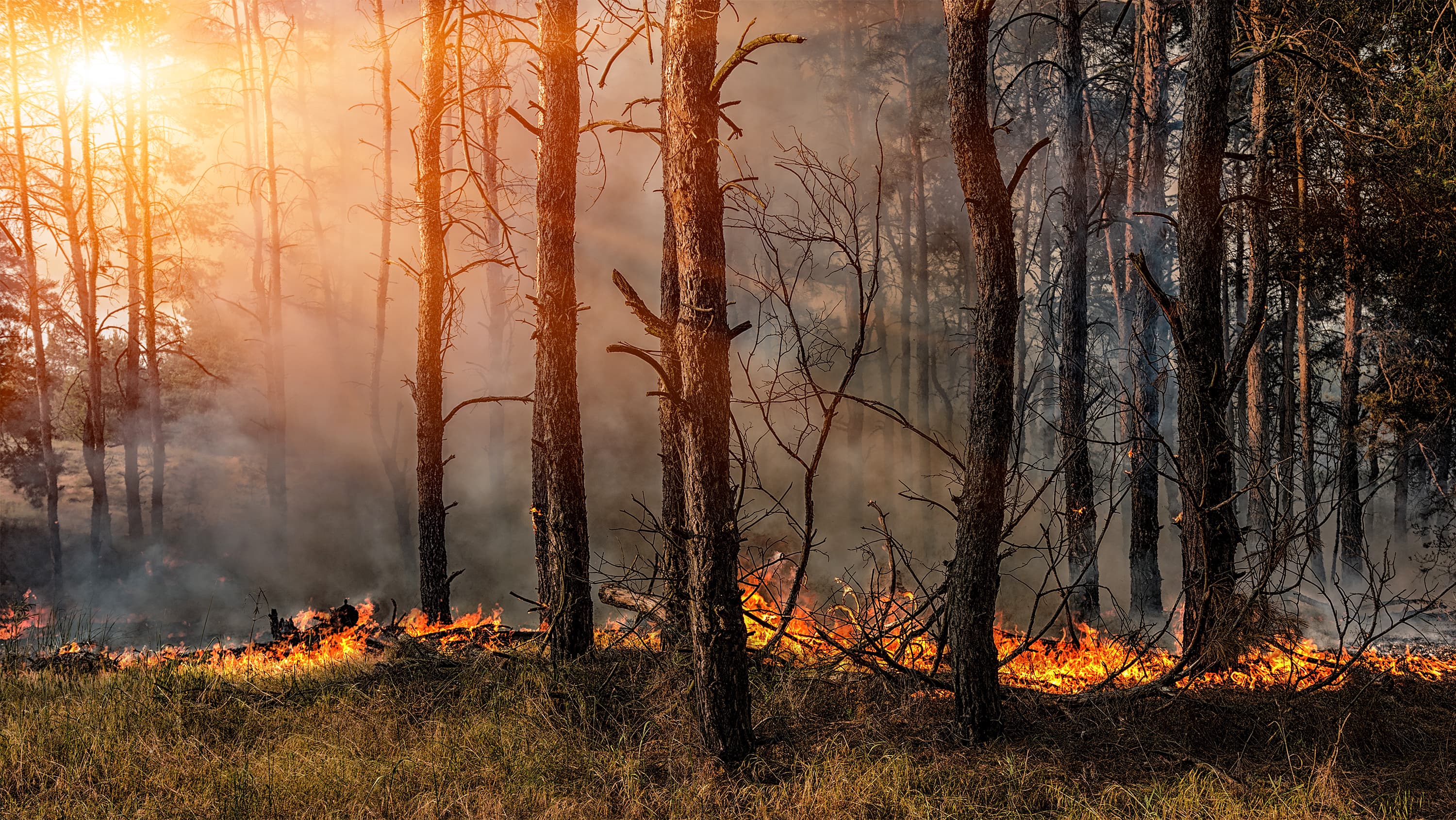An unusual mix of blazes sparked Alberta’s fierce 2023 wildfire season, suggests a new report by experts including a University of Alberta researcher.
Two types of wildfire patterns, which normally wouldn’t occur in a single year, fed 36 large fires that devoured an estimated 2.1 million hectares of land and were responsible for 95 per cent of the area burned in Alberta last year, according to the perspective paper, published in the Canadian Journal of Forest Research.
And though the combination appears to be an anomaly, last year’s wildfire season “redefined what is possible under a warming climate,” says Jen Beverly, a professor of wildland fire in the Faculty of Agricultural, Life & Environmental Sciences and co-author on the paper.
“It shows how different patterns of fire activity can worsen overall severity in ways we currently don’t fully understand.”
Alberta’s 2023 fire season was unusually severe, far exceeding all other years in the province’s historical record, which spans the last century. The amount of land burned last year was about 63 per cent greater than the previously recorded maximum in 1981.
Along with that, while large wildfires in Alberta were, on an individual basis, similar in severity to past years, there were simply more of them, the report notes. In the 20 years prior to 2023, there was an average of two fires per year larger than 10,000 hectares, compared with the all-time high of 36 comparable blazes that burned last year.
To find out what factors may have contributed to that, the researchers reviewed operational fire data from 2023 in relation to past years, and were able to identify a distinct split in the way large fires played out through the season.
Early outbreak sparked in spring
First, there was an early season outbreak of 18 of the blazes, occurring during the first two weeks of May, mostly in west-central Alberta. At the same time, lightning strikes also played a major role, causing 13 of the fires.
Large lightning-caused fires occurring so early in the spring was unusual compared with the historical average of just one such fire in the same time period per decade between 1983 and 2022, Beverly notes.
“Normally lightning doesn’t start to become a factor in spring wildfires until late May, and more into June, July and August.”
Although early outbreaks of lightning-caused fires have happened before, with one on record in 1993, it didn’t lead to a severe fire season, Beverly points out.
“The lightning happened, but the conditions weren’t right for those fires to do much.”
Last year’s wildfire season exposes those early lightning strikes as a previously unrecognized threat, she adds.
“If we hadn’t had that outbreak in early May from lightning fires, the season would still have been severe but it would not have been off the charts.”
Most large fires ever recorded
The remaining 18 large fires were more intermittent throughout the rest of the season and occurred in the northernmost regions of Alberta.
The combination of the two large fire patterns was enough to make the 2023 fire season particularly extreme, she says.
“Either one of those alone wouldn’t have produced the extraordinary amplification in area burned that we saw. So in some ways what we saw was typical of patterns we’ve seen before, but because those two pieces happened together in the same year, there was this massive spike in area burned.”
A combination of climate warming, dry conditions prior to spring green-up, delayed detection due to isolated locations, and simultaneous strikes could have all contributed to last year’s early fires, the study suggests.
“These factors, alone or combined, could explain the above-average warm, dry and windy conditions that were seen in early May,” Beverly says.
Limited firefighting resources, spread thin by the early and high number of large fires last May, also likely resulted in a reduced response to many of the wildfires, she adds.
“It meant all of the fires were being triaged based on public safety, so many were left to just grow because they weren’t posing an immediate threat to people.”
“We need to start planning for the unexpected”
The observations in the paper show the need for more extensive research to explore what future fire seasons could bring in the face of climate warming, Beverly suggests.
“It calls on us to recognize that we can’t rely on past data to anticipate what’s coming. There was nothing in the 40 years before 2023 that would lead us to expect and plan for a burst of lightning activity in the first week of May. So then if this can happen, and we can’t really anticipate it, then we need to start planning for the unexpected.
“The study opens up a lot of questions. We need to better understand weather patterns and what is happening with that warm weather and lightning activity in the month of May,” she adds.
The paper also calls for further development of data, methods and tools to allow for more proactive planning and real-time decision support in evacuation plans, as well as for prioritizing fire suppression resources.
“We’ve got to get better at triaging those fires and knowing which ones to devote resources to quickly,” Beverly says.
It’s important to recognize that the conditions that lit last year’s severe wildfire season could happen again, she adds.
“We may not see another burst of early lightning activity for 30 more years, but what 2023 shows us is that we are extremely vulnerable.”
